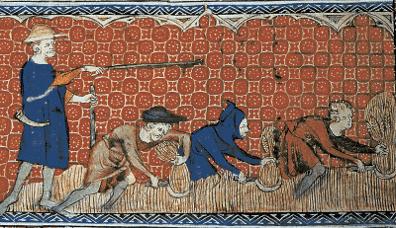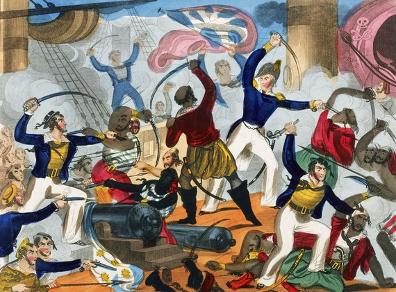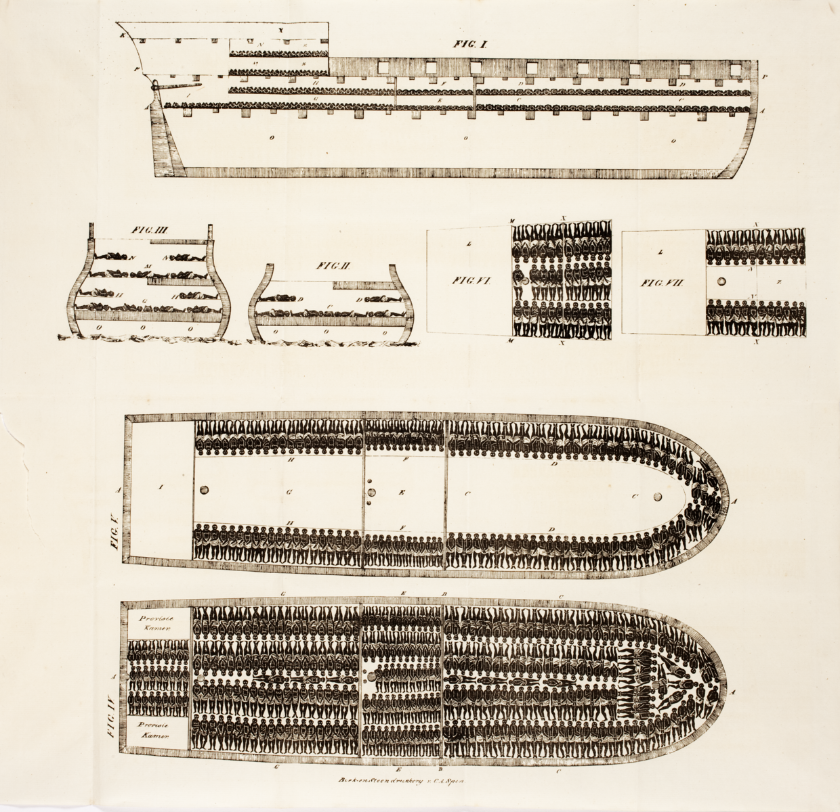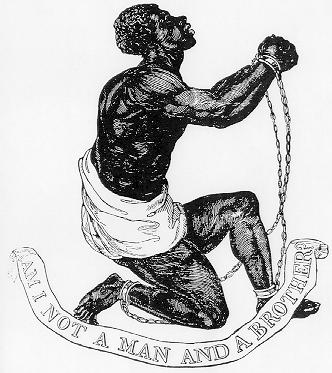http://opendomesday.org/place/SX7679/ashburton - Accessed 13-11-2015
* Only the heads of households were counted.
http://www.domesdaybook.co.uk/life.html - Accessed 15-11-2015
A slave was 'a man or woman who was the property of his or her lord and had no lands.'
http://www.nationalarchives.gov.uk/domesday/glossary/
1102. The Council of Westminster decreed 'Let no one hereafter presume to engage in that nefarious trade in which hitherto in England men were usually sold like brute animals'.
Council of Westminster 1102, 28, Councils and Synods, 1, no 113
https://www.bl.uk/the-middle-ages/articles/peasants-and-their-role-in-rural-life

William Geffrey, also born on the Bishop's manor of Ashburton, had received his manumission on June 6th.
The Register of Edmund Stafford (1395-1419), Rev F C Hingleston, London

From the 1600s until the beginnning of the 19th century North Africans - the Barbary Corsairs' - captured English men and women for slaves. The British government twice used the navy to secure their release, and one list has survived of those who were rescued. A separate list details where the captives came from - one unnamed person was from Ashburton.
National Archives SP71/13/29 and SP71/13/31 quoted in Devon and the Slave Trade, Dr Todd Gray, Exeter 2007 pp31ff
By John Fairburn (1793–1832) (artfinder.com) [Public domain], via Wikimedia Commons
Usually, however, when we think about slaves, we are thinking about Europeans trafficking Africans across the Atlantic: 'The African Trade'.
http://www.eyewitnesstohistory.com/slavetrade.htm
By the early 1700s The Royal African Company was buying cloth from Devon as one of the items that could then be sold abroad, with the money used to buy goods such as gold, ivory, and hides. These were then sold back to England. Although these goods produced two thirds of its income, the single greatest commodity that the company bought in Africa was slaves, who were sold to the West Indies.
Davies, The Royal African Company, pp44-46, 179, quoted in Devon and the Slave Trade, Todd Gray, Exeter 2007, p90
1711. 'A petition of the dealers in wool, serge-makers, wool-combers, and weavers, in behalf of themselves, and great numbers of poor people, in and about the town of Ashburton, in the county of Devon was presented to the House...'
The petition states that when trade in fine serges decreased, the clothmakers turned instead to making a coarser serge called perpetuana, which they sold to the Coast of Africa. 'A Company' was trying to restrict this trade to itself, which would leave the 'Petitioners exposed to the utmost straits'.
The matter was referred to the House of Commons, which regulated the African trade.
Documents Illustrative of the History of the Slave Trace to America, Elizabeth Donnan, New York 1965, vol 2, p140-141.

In April 1741 John, the son of Thomas Smerdon 'Minister of Woodland' was baptised.
Parish records
A transcription of the Ashburton burial register made by Mr and Mrs Hatch (see Some Deaths and Burials) has the following: 'Ap 1788 Thomas Smerdon minister of Woodland and master of the Grammar School of the town, both which stations he filled with credit for about 50 years.'
His son John may have been the John Smerdon who was an apprentice attorney in 1756 - and the death of a John Smerdon, attorney, was reported in 1817. He was aged 76, giving a likely birth year of 1741
Register of duties paid for Apprentices' Indentures 1710-1811
The New Monthly Magazine, vol 7, London, January - June 1817, p461
Parish records
A John Smerdon married Elizabeth Madge, a daughter of Stephen and Dorothea Madge.
Stephen Madge, Rector Clerk of Combeinteignhead, later left a will, proved in the Prerogative Court of Canterbury. One of the beneficiaries was his daughter Elizabeth, wife of John Smerdon, attorney at law. John and Elizabeth were currently living at Ashburton. The will also made provision for the repayment of a debt of £600 which John owed to his sisters-in-law Sarah and Ann.
http://discovery.nationalarchives.gov.uk, May 1782, ref PROB 11/1090/221
John and Elizabeth had a number of children, one of whom was Thomas Madge Smerdon, baptised at Ashburton on the 23rd January 1769.
Parish records
Using sources such as the Liverpool Muster Rolls, Stephen D Behrendt has determined that Thomas moved to Liverpool*, and was captain on slaving voyages between 1790 and 1798, the first at age 21. This made him the youngest captain in Stephen Behrendt's study.
Stephen D Behrendt, The Captains in the British Slave Trade 1785-1807, Transactions of the Historic Society of Lancashire and Cheshire, vol 140, 1990, p131
*Probably via Bristol - see below.
Amongst the PCC wills for Ashburton people is one for Thomas Madge Smerdon, 'Captain of a vessel in the African trade'. It was made in September 1799, when, as the will says, Thomas was on a visit to Ashburton. William Southcott Young, surgeon, was to be his executor, and his estate was to provide an income for his mother (not named), and after her death was to be divided amongst his brothers and sister (also not named).
National archives http://discovery.nationalarchives.gov.uk/ Ref PROB11/1330/224
https://familysearch.org
In a codicil Thomas appoints another executor, his uncle Mungo Charles Wright - a mariner from Bristol. Sarah Madge married Mungo Wright in Bristol in 1783. Although Thomas's will says Mungo is a mariner, Mungo is a 'merchant of Bristol' in his will of 1817.
http://discovery.nationalarchives.gov.uk Ref PROB 11/1597/241
The codicil gave Mrs Mary Harrison of Liverpool £10 (this appears to be for 'mourning') and he gave his gold watch to his godson Charles Young.
Bristol Presentments and other sources, Bristol, Africa and the Eighteenth Century Slave Trade to America, ed David Richardson, vol 4, 1770- 1807, Bristol Record Society 1996, pp 23, 171
By 1790 Thomas Smerdon was the master of the Royal Charlotte, which Mungo Wright partly owned. It took 140 slaves to the West Indies. He was master of the same ship in 1792 and again in 1793.
ibid p175, 225, 236
*******
John Swete was baptised John Tripe on the 13th August 1752 at Ashburton, the son of Nicholas and Rebecca Tripe. His father, Nicholas, was a noted surgeon in the town - see the Doctors and surgeons section under Banks and businesses.
https://familysearch.org/
In
his 1795 autobiography, 'A Sketch of My Life' he wrote that he was born
in July, and that his mother before her marriage was Rebecca Yard. His
former home had by then become the Golden Lion Hotel.
Devon Record Office Z19/3/1, reference given in Travels in Georgian Devon - see below.
Mr
Smerdon, and then his son the Rev Thomas Smerdon taught him at the
Ashburton Free School - the Rev Thomas Smerdon would have been the grandfather of Thomas Madge Smerdon (above). Sir Robert Palk helped him to get to Eton in
1769, and from there he went to Oxford. He took Holy Orders in 1781.
John benefitted from an inheritance which included plantation lands and slaves:
'I
give and devise my said plantation lands, negroes and hereditaments in
the said Island of Antigua* and also my manors, lands, tenements and
hereditaments situate and being in the said County of Devon and
elsewhere in England with their and every(?) of their rights, members
and appurtenances unto the Reverend John Tripe, son of ____Tripe surgeon
of Ashburton....'
It was because of this inheritance that he changed his name from Tripe to Swete.
Will of Esther Swete, 23 Feb 1781, National Archives PROB 11/1075/73
*For more on the connection of the Swete family to slavery in Antigua, see The Swete family in Modbury
http://www.blacknetworkinggroup.co.uk - Accessed 6-4-2014
For more on John Swete see Famous Ashburtonians
*******
http://www.nationalarchives.gov.uk/pathways/blackhistory/rights/abolition.htm - Accessed 23-10-2016
By Josiah Wedgwood (1730-1795) and either William Hackwood or Henry Webber; (British Abolition Movement) [Public domain], via Wikimedia Commons

Exeter Flying Post, quoted by http://www.blacknetworkinggroup.org/75/ - Accessed 22-10-2016
*I can find no record of a Trefuis (or even Trefusis) Love. However, a Reverend Trefusis Lovell was born in Plymouth, and became chaplain to the Earl of Bristol. He was later Archdeacon of Derry and finally became Rector of St Luke's, Middlesex, until his death in 1844, aged 77.
From the records below it seems fairly certain that the Reverend Lovell was the cleric preaching at Ashburton.
Alumni Oxoniensis, 1715-1786, vol3, p875
The Gentleman's Magazine, July 1844, p662
William Taprell and Elizabeth Joynt married in Ashburton on June 27th, 1792. The officiating minister was Trefusis Lovele.
This was one a series of marriages from the 14th February 1791 that Trefusis Lovele, or Lovell, performed, previously signing himself as curate. Marriages immediately after William and Elizabeth's were performed by Wm Cockey, curate.
Parish records
*******
Exeter Flying Post 11 August 1814 p4 col3
*Part of the peace process?
It was not until 1833 that a further act (gradually) abolished slavery altogether throughout the British colonies. British taxpayers paid £20,000,000 in compensation to plantation owners in the West Indies.
http://www.reuters.com/article/uk-slavery-idUSL1561464920070322 - Accessed 23-10-2016
There is a database of owners at the time of abolition, which can be searched. To date, no-one from Ashburton has been identified.
http://www.ucl.ac.uk/lbs/ - Accessed 23-10-2016
*******
1841 The children of the Baptist Sunday School in Ashburton had a special tea to celebrate the anniversary of the emancipation of the West Indian slaves.
Charles Tippett was the minister.
Western Times 14 August 1841 p3 col4
Emancipation Day was Friday, 1 August 1834
http://www.understandingslavery.com Accessed 28-10-2013
*******